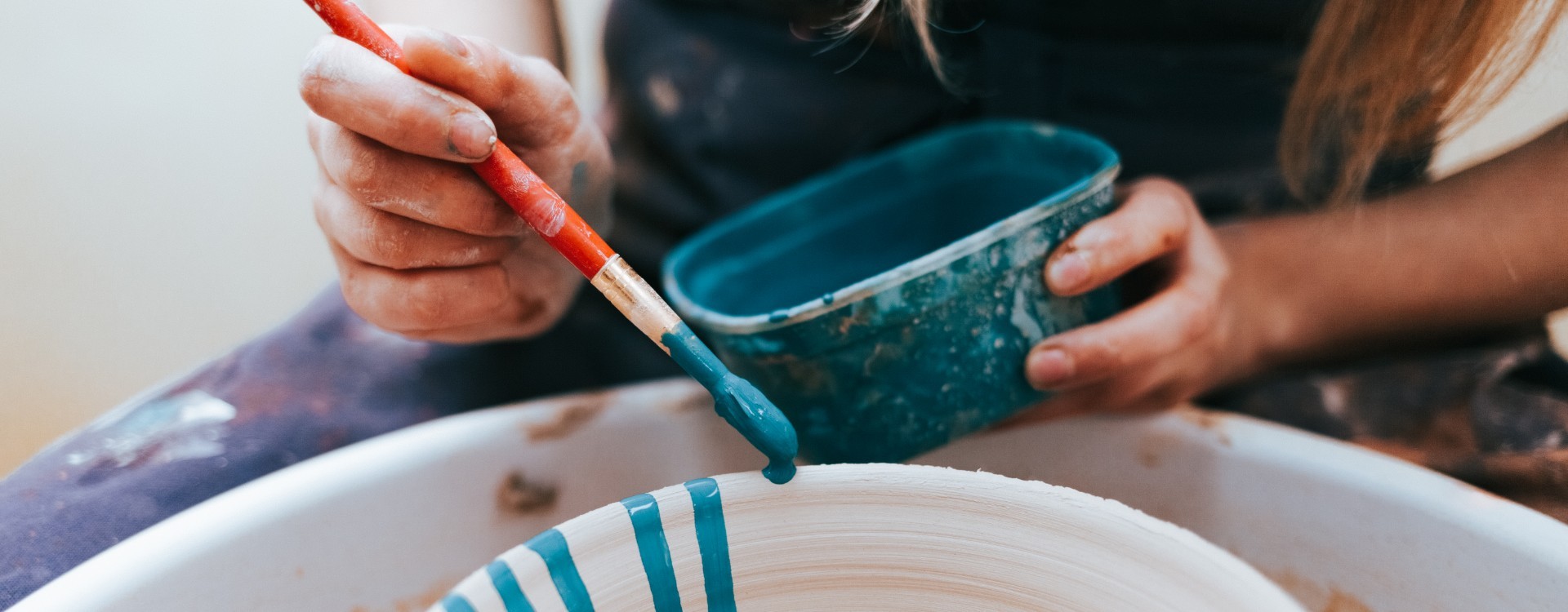Painting ceramics: the brush technique

There are many different decorating ideas and techniques for using brushwork on ceramics. Here we are going to talk about some of these, underlining the importance of using the right brushes for each one.
There is an enormous variety of commercially available brushes to decorate ceramics. The type of brushes you need depends, of course, on the work you have to do with them. Brushes are made of various materials and each one is suitable for a specific work.
Suggested brushes for ceramics are, however, made of vair, sable hair or ox-hair.
Many brushes, nowadays, are made using synthetic materials. Though they are not as good as the ones made with natural hair such as vair, sable or ox, they are a less expensive alternative and also, they are sometimes more resistant to the abrasive qualities that are a natural part of ceramic surfaces.
Ox-hair, similarly to other kinds of natural hair, is first sterilized through boiling and then processed through various procedures to make it preserve its natural qualities. Europe is the only nation that has mantained the ability to process ox-hair, so the ox-hair brushes produced here are very valuable.
This kind of hair has been also used by the Etruscans in the 4th century B.C. and by the Egyptians, the first ones to create their frescoes in Tarquinia and the second ones to decorate the pyramids: ox-hair brushes have always been used in a polyvalent way, for many paining techniques. They are excellent, expecially when compared to bristle hair brushes.
When using bristle brushes, keep in mind that you will experience a short, staccato or stippled mark because there is little absorbency that takes up a charge of ink or colour, while in long, fine-hair brushes the mark is expected to be long and sinuous just after one single charge of paint. A "charge" is the amount of paint that may be held by the brush as a reservoir and that is going to be gradually released as the tip, full brush or side moves across ceramic surfaces.
Every brush can be used ih three essential ways: the tip, or point, method, the drag, or side, one, the full-bodied stroke.
The essential is the result: we love colourful painted ceramics! Find out Piccadilly's creations surfing the website!